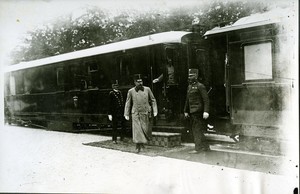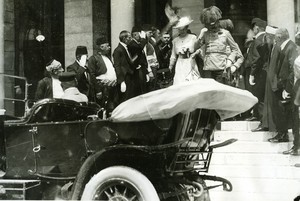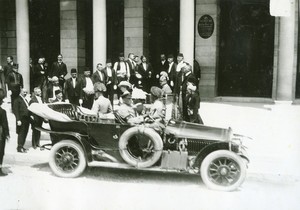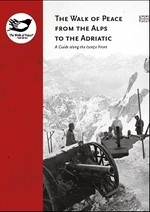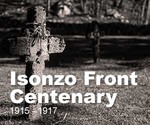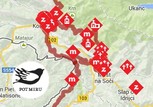In Europe lights are dimmed
On 28 June 1914, the heir to the throne, Franz Ferdinand, and his wife, Sofia Hohenberg, born Chotek, travelled to Sarajevo to oversee the manoeuvres. He had been advised not to attend the trip, as it fell on the so-called Vidov Dan day, an important Serbian historical anniversary. Despite warnings Franz Ferdinand did not feel threatened. The nationalistic organization Young Bosnia understood his visit as a provocation and they took advantage of the opportunity to attack the representative of the 'hated government', which in 1878 conquered and in 1908 annexed Bosnia to Austria-Hungary. The first assassination attempt, which was unsuccessful, was carried out by Nedeljko Čabrinović. The bomb he threw deflected from the car and exploded under another car in the royal retinue. Later during the visit, the car with the royal couple coincidentally stopped next to one of the assassins who was already leaving the area. Shots of Gavrilo Princip, a member of Young Bosnia, were fatal for the royal couple and were the catalyst that pushed the amassed conflicts and military connections among European states into a military conflict. Due to its magnitude, importance and number of casualties, it was named the Great World War. Despite connections of the assassins, Young Bosnia, with Serbia, no direct evidence existed that the assassination was organized by the Kingdom of Serbia. Serbia was not ready for the war and was economically and militarily exhausted after the two Balkan Wars. The assassination caused great consternation among inhabitants of Slovenian lands. The cities flew black flags and patriotic feelings were growing among the populace. The circles of the Austro-Hungarian government that favoured war saw the assassination as a confirmation of their opinions about the necessity of a preventive and punitive war. On 23 July, Austria-Hungary sent an ultimatum to Serbia demanding from Serbia, among other things, to prohibit anti-Austrian publications and to allow direct Austro-Hungarian search for the assassin in the Serbian territory. Since Serbia did not want to accept the last condition which was considered to be unconstitutional, Austria-Hungary, after discussions with its ally Germany, declared war on Serbia on 28 July and initiated a general mobilisation. As a result of numerous international connections and treaties on military cooperation and strategic defence plans, the irreversible process of declarations of war, mobilisations and preparations began. Russia responded to the Austro-Hungarian declaration of war on Serbia by a general mobilisation in the end of July. Thus the Serbian and Austro-Hungarian conflict grew from a local to an international one. Despite diplomatic attempts to resolve the crisis through political means, the war became inevitable. Declarations of war and mobilisations in July and August 1914, following the Austro-Hungarian declaration of war on Serbia, thus very quickly transformed Europe and a large part of the world into a battlefield.
Marko Štepec, M.A., National Museum of Contemporary History

